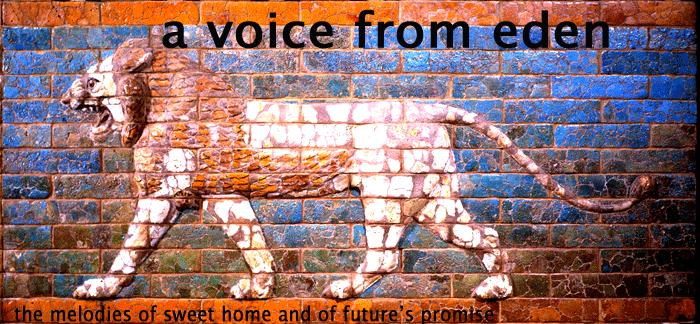Selecting a new pope: the acceptance and the proclamation (10th and last part)
When a valid election has taken place, the junior cardinal deacon summons the secretary of the College of Cardinals and the master of Papal Liturgical Celebrations. Then, the dean of the College of Cardinals (presently Cardinal Ratzinger) asks the consent of the one elected, "Do you accept your canonical election as Supreme Pontiff?" And as soon as he has received the consent, the Cardinal Dean then asks, "By what name do you wish to be called?" The moment he has uttered the words of his official name, the interregnum ends and a new pontificate has begun. If the cardinal elected is not a bishop, he will immediately be ordained bishop.
Then, the new pope is led into the "Room of Tears" behind the Sistine Chapel to put on the vestments proper to the pope: the while silk simar, white moiré silk fascia without heraldic device, a lace of linen rochet and the red mozzetta over which is placed a richly embroidered stole, and the white zucchetto on his head.
He re-enters the Sistine Chapel and sits on a throne. Then the cardinals--headed by the cardinal dean and then the cardinal chamberlain--approach the new pope to pay him homage and obedience. Usually, protocol demands a genuflection and/or an exchange of the embracio or kiss of peace followed by the reverence of the new Fisherman's ring which had been prepared by the order of the cardinal chamberlain. In time, the name of the new pope will be inscribed upon the ring.
After the cardinals have paid homage to the new pope, the doors are opened allowing the rest of the hierarchy of the Church who were not allowed inside the conclave to see for the first time the new pope. In the meantime, the crowd outside St. Peter's Basilica has been informed that a valid election has taken place through the plume of white smoke (sfumata bianca) from a chimney in the Vatican.
Within two hours of the election, the cardinal deacon, accompanied by the prefect of the Papal Household and the papal master of ceremonies, appear at the balcony of St. Peter's. In Latin the cardinal deacon proclaims: "I announce to you a great joy. We have a Pope! His Most Eminent and Reverend Lord, Lord [his baptismal name], Cardinal of the Holy Roman Church [his surname], who has chosen for himself the name of [the new official papal name]."
The new pope emerges from the balcony. And as one of his first actions as pope, he imparts his first blessing to the city of Rome and to the world (urbi et orbi).
[This concludes the series begun on April 2nd--the day of the announcement of John Paul's death--on the ceremonies associated with the announcement of the death of a pope. The references used have been Pope John Paul II's Apostolic Constitution "Universi Dominici Gregis" ("On the Vacancy of the Apostolic See and the Election of the Roman Pontiff") and James-Charles Noonan, Jr.'s "The Church Visible: The Ceremonial Life and Protocol of the Roman Catholic Church," The Penguin Group: New York. 1996.]
Then, the new pope is led into the "Room of Tears" behind the Sistine Chapel to put on the vestments proper to the pope: the while silk simar, white moiré silk fascia without heraldic device, a lace of linen rochet and the red mozzetta over which is placed a richly embroidered stole, and the white zucchetto on his head.
He re-enters the Sistine Chapel and sits on a throne. Then the cardinals--headed by the cardinal dean and then the cardinal chamberlain--approach the new pope to pay him homage and obedience. Usually, protocol demands a genuflection and/or an exchange of the embracio or kiss of peace followed by the reverence of the new Fisherman's ring which had been prepared by the order of the cardinal chamberlain. In time, the name of the new pope will be inscribed upon the ring.
After the cardinals have paid homage to the new pope, the doors are opened allowing the rest of the hierarchy of the Church who were not allowed inside the conclave to see for the first time the new pope. In the meantime, the crowd outside St. Peter's Basilica has been informed that a valid election has taken place through the plume of white smoke (sfumata bianca) from a chimney in the Vatican.
Within two hours of the election, the cardinal deacon, accompanied by the prefect of the Papal Household and the papal master of ceremonies, appear at the balcony of St. Peter's. In Latin the cardinal deacon proclaims: "I announce to you a great joy. We have a Pope! His Most Eminent and Reverend Lord, Lord [his baptismal name], Cardinal of the Holy Roman Church [his surname], who has chosen for himself the name of [the new official papal name]."
The new pope emerges from the balcony. And as one of his first actions as pope, he imparts his first blessing to the city of Rome and to the world (urbi et orbi).
[This concludes the series begun on April 2nd--the day of the announcement of John Paul's death--on the ceremonies associated with the announcement of the death of a pope. The references used have been Pope John Paul II's Apostolic Constitution "Universi Dominici Gregis" ("On the Vacancy of the Apostolic See and the Election of the Roman Pontiff") and James-Charles Noonan, Jr.'s "The Church Visible: The Ceremonial Life and Protocol of the Roman Catholic Church," The Penguin Group: New York. 1996.]




<< Home